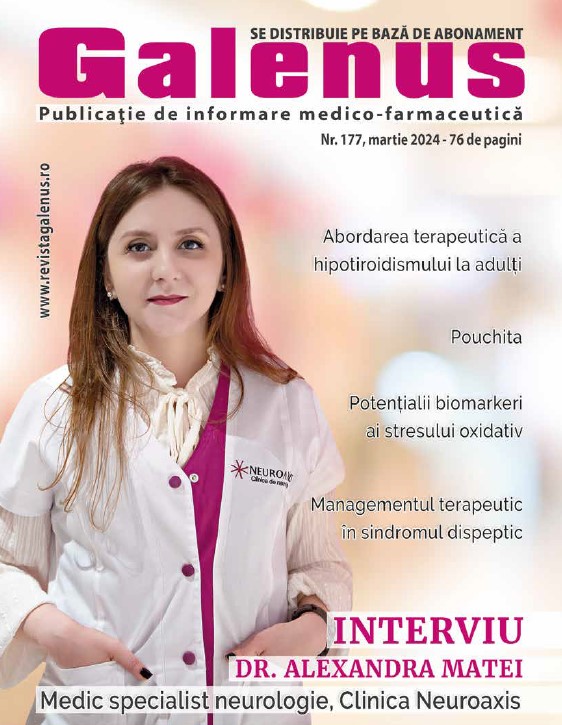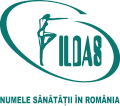Acasă » Practică medicală » Fetus as a patient – prenatal testing
Fetus as a patient – prenatal testing

Rezumat:
Medicina materno-fetală este o supraspecializare complexă care impune funcţionarea optimă a unei echipe multidisciplinare pentru diagnosticul şi terapiile prenatale. Sunt discutate în ultimii ani mai multe aspecte etice şi legale, în funcţie de legislaţia în vigoare într-o anumită ţară. Specialiştii bine instruiţi în medicină materno-fetală pot oferi la ora actuală consultanţă la standarde înalte şi o serie de teste noi, într-o continuă evoluţie în ultimii 40 de ani. Testarea prenatală cuprinde screeningul şi diagnosticul prenatal. Screeningul prenatal poate fi efectuat în trimestrele I şi II şi cuprinde: screeningul seric mater, ecografia, testele noninvazive prenatale. Diagnosticul prenatal poate completa screeningul pozitiv cu: biopsia de vilozităţi coriale, amniocenteza, cordocenteza şi studii imagistice.
Cuvinte-cheie: screening prenatal, diagnostic prenatal, beta-hCG
Abstract:
Fetal medicine is a complex supraspecialisation that involves a multidisciplinary team for prenatal diagnosis and fetal therapy. Several issues, including ethical and legal considerations are particular to fetal medicine, depending on each country and its own rules. Well-trained maternal-fetal specialists can now provide high-class care for pregnant women, with an increased number of new tests, compared to the last four decades. Prenatal testing is divided into two: screening and diagnosis. Prenatal screening can be offered during the first trimester and the second trimester and counts: maternal serum screening, ultrasonography, noninvasive prenatal tests. Prenatal diagnosis can complete the positive screening with: fetal ultrasonography, chorionic villus sampling, amniocentesis, cordocentesis and radiologic studies.
Keywords: prenatal screening, prenatal diagnosis, beta-hCG
Only in the past few decades the fetus has been considered a patient and became the subject of extensive scientific study and attempts at treatment. Technological advances have facilitated our ability to access and manipulate the fetus.
Fetal medicine is nowadays a complex multidisciplinary team consisting of the following:
- An obstetrician: manages the pregnancy and eventually may perform minimally invasive interventions
- A maternal-fetal medicine specialist/perinatologist: specialised in diagnosis and treatment of the high-risk maternal-fetal pathology
- An obstetric sonologist: with expertise in defining the fetal diagnosis, its severity and guiding diagnostic and therapeutic procedures
- A genetic counselor: focuses on prenatal diagnosis, prognosis, genetic counseling
- A neonatologist: counsels the family with respect to expectations and outcomes and prepares them to continue the care for the baby after birth
- A pediatric surgeon: postnatal management of the fetal disease
- Pediatric subspecialists: cardiologists, cardiothoracic surgeons, neurosurgeons, urologists, etc. (2).
Prenatal testing
Prenatal testing is divided into two types: screening and diagnosis.
1. Prenatal screening tests
Screening tests are safe, minimally invasive studies performed in a large, low-risk population to detect conditions that can severely affect the fetus, the general outcome of the pregnancy. Typically, these tests are highly sensitive, but because specificity may be low, further diagnostic tests are required to confirm the diagnosis in any patient with a positive screening result. Because a positive screening result modifies risk perception, it provides a reasonable indication for a more specific diagnosis test (2).
In January 2007, the American College of Obstetricians and Gynecologists (ACOG) Practice Bulletin Number 77 recommended screening and invasive diagnostic testing should be available to all women who present for prenatal care before 20 weeks of gestation regardless of maternal age (3). Several strategies for screening have been proposed further, so today we have a good strategy for prenatal screening and diagnosis where it is needed.
In the last decades, prenatal screening for aneuploidy has become increasingly effective. While combined screening is considered to be the gold standard, the use of cell-free fetal DNA will result in a change of paradigm. Respective studies indicate that, in screening for trisomy 21, the detection and false positive rates are 99% and 0,1%, respectively. For trisomies 18 and 13, there is less evidence but recent studies report detection rates of 98% and 86%. Despite the excellent result in screening for trisomy 21, NIPT should not be considered a diagnostic test.
An ideal perinatal genetic screening test should fulfill the following criteria:
- Identify common or important fetal disorder
- Be cost-effective and easy to perform
- Have a high detection rate and low false positive rate
- Be reliable and reproducible
- Screen for disorders for which a diagnostic test exists
- Be positive early enough in gestation to permit safe and legal options for pregnancy termination if desired.
Screening tests existing on the market today screen for various metabolic, chromosomal and anatomic defects. Diagnostic tests are indicated when the conditions that increase the risk of chromosomal anomaly are present or suspected (advanced maternal age, suggestive fetal ultrasonographic findings). Genetic counseling by trained professionals in a timely and sensitive fashion is an essential keypoint to prenatal diagnosis. The functionality of the team described in the beginning of this review is ground zero of screening.
First-trimester screening tests for aneuploidies may include:
- Maternal serum screening (MSS): beta human chorionic gonadotropin (beta-hCG) and pregnancy associated plasma protein –A (PAPP-A)
- Ultrasound examination: nuchal translucency (NT), nasal bone (NB), facial angle, ductus venosus (DV), tricuspid valve (TV)
- Noninvasive prenatal tests
Noninvasive prenatal genetic testing (NIPT) of whole chromosomal aneuploidies has already altered the landscape of prenatal diagnostics in the United States (1) and increasingly worldwide. Aside from the noninvasiveness, advantages of NIPT include the rapid turnaround, relatively low cost (not valid for our country because of general socio-economic status of women, especially for the countryside), and simplicity of the procedure for pregnant couples.
Arguably, these benefits are largely made possible because it is not necessary to construct parental haplotypes in order to accurately diagnose chromosomal copy number. NIPT is more accurate than conventional maternal serum screening (MSS) but is also more costly.
For noninvasive prenatal diagnosis (NIPD) of monogenic disease, on the other hand, this is not the case. In order for NIPD to take hold in the clinical setting, it will be necessary to develop universal methodologies that apply to the diagnosis of any mutation, maternal or paternal, regardless of inheritance (4,5,6).
Second-trimester screening tests may include the following:
- MSS/triple screen: maternal serum alpha-fetoprotein (MSAFP), serum beta-hCG, unconjugated estriol 9uE3)
- The addition of inhibin A to triple screen results in the quadruple screen
- Ultrasound examination of all fetal structures
2. Prenatal diagnosis
A term once considered synonymous with invasive fetal testing and karyotype evaluation, now encompasses pedigree analysis, population screening, fetal genetic risk assessment, genetic counseling and fetal diagnostic testing.
Detecting or defining risk for disease in an asymptomatic low-risk population is the goal of screening. As opposed to diagnostic testing, intended to identify or confirm an affected individual, screening is intended to identify populations who have an increased risk for a specific disorder (2).
Prenatal diagnosis of fetal disorders and structural malformations is becoming increasingly important for many reasons. Approximately 3% of all pregnancies result in a delivery of an infant with a genetic disorder or structural anomaly. Such anomalies are also the biggest cause of infant mortality in the United States. Minor malformations are found in an additional 7-8% of neonates.
Over the last four decades, the involvement of genetic specialists in the field of maternal fetal medicine has increased the capacity of the early diagnosis. Safe and effective fetal diagnostic techniques are being developed, and earlier detection is expanding therapeutic options. With prenatal diagnosis of fetal abnormalities, the parents, obstetric team, geneticists, and other subspecialists can discuss options ranging from abortion to intrauterine medical and surgical treatments. In concert with the neonatologists, the optimal time, mode and place of delivery can be determined. Parents can be prepared for short/long-term postnatal expectations. If appropriate, genetic counseling can assist with further reproductive planning (2,3).
First-trimester diagnostic tests may include the following:
- Fetal ultrasonography
- Chorionic villus sampling (CVS), early amniocentesis
- Preimplantation biopsy with preimplantation genetic diagnosis (PGD): performed for parents with substantial risk of known genetic disorders and in women with repeated miscarriages due to chromosomal translocation (1,2,3).
Second-trimester diagnostic test may include the following:
- Midtrimester amniocentesis
- Percutaneous umbilical blood sampling or cordocentesis
- Late chorionic villus sampling
- Fetal muscle and liver biopsy
Radiologic studies are used to complete the prenatal diagnostic tests and to orient the management of the case:
- Ultrasonography: single most valuable modality for identifying fetal and/or placental structural anomalies
- Magnetic resonance imaging (MRI)
- Computer tomography scanning (CT) with limited applications in prenatal diagnosis
- Fetal magnetocardiography
Bibliography:
- Bianchi DW, et al. DNA sequencing versus standard prenatal aneuploidy screening. N Engl J Med. 2014;370(9):799–808. doi: 10.1056/NEJMoa1311037.
- Creasy & Resnik’s Maternal-Fetal Medicine 7th Edition, 2014.
- JM Dicke, Lindsey Van Duyne, Rachel Bradshaw. The utilization and Choices of Aneuploidy Screening in a Midwestern Population. J Genet Couns. 2014: 23 (5):874-880.
- Fan HC, Gu W, Wang J, Blumenfeld YJ, El-Sayed YY, Quake SR. Non-invasive prenatal measurement of the fetal genome. Nature. 2012;487(7407):320–324.
- Kitzman JO, et al. Noninvasive whole-genome sequencing of a human fetus. Sci Transl Med. 2012;4(137).
- Lo YM, et al. Maternal plasma DNA sequencing reveals the genome-wide genetic and mutational profile of the fetus. Sci Transl Med. 2010;2(61).
Asist. univ. obstetrică-ginecologie, UMF „Carol Davila”
Medic specialist obstetrică-ginecologie, INSMC „Alessandrescu-Rusescu”
Fetal Care Center, Bucureşti
Fii conectat la noutățile și descoperirile din domeniul medico-farmaceutic!
Utilizam datele tale in scopul corespondentei si pentru comunicari comerciale. Pentru a citi mai multe informatii apasa aici.







